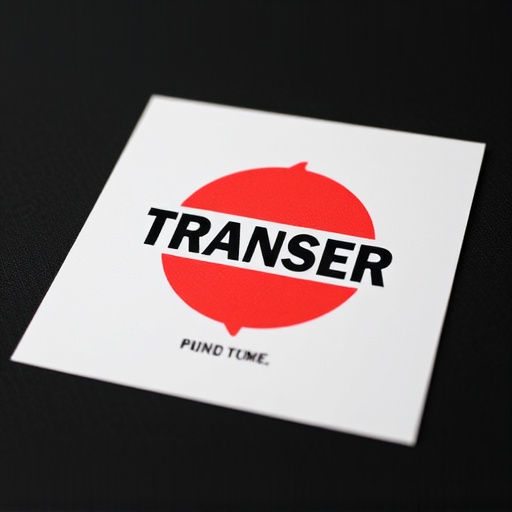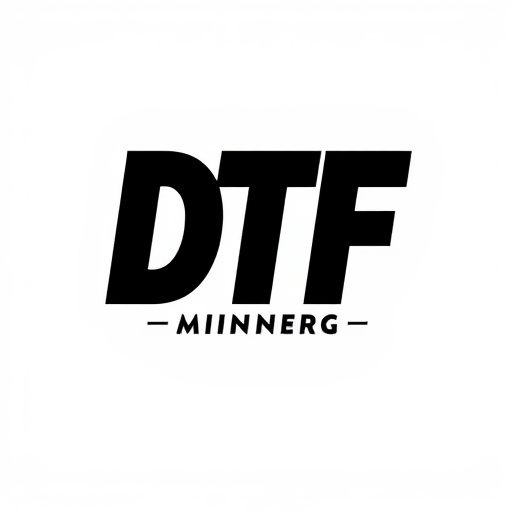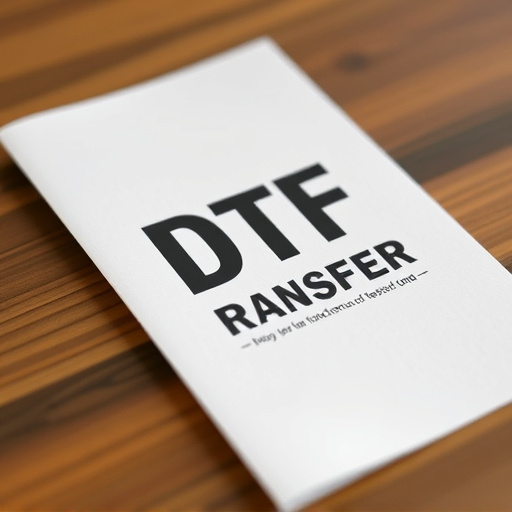DTF Transfers revolutionize custom printing for light-colored garments by directly applying ink via a heat press, eliminating complex preparation. This technology offers vibrant, durable prints resistant to fading, peeling, or cracking, suitable for intricate designs. The ideal DTF setup involves high-quality inks and paper tailored for light fabrics, while pre-treating fabric ensures optimal results. Proper curing and aftercare are crucial for maintaining the transfer's longevity and aesthetics.
In the realm of textile printing, Direct-to-Fabric (DTF) transfers have emerged as a game-changer for light-colored garment materials. This innovative technique offers unparalleled advantages, ensuring vibrant, long-lasting prints on fabrics previously challenging to work with. From understanding the fundamentals of DTF transfers to mastering application techniques and aftercare, this article guides you through optimizing these processes specifically for light garments. Discover how the right choices in ink, paper, preparation, and curing can deliver exceptional results.
- Understanding DTF Transfers: A Brief Overview
- The Advantages of DTF for Light Garment Materials
- Choosing the Right Ink and Paper for Optimal Results
- Preparation and Pre-Treatment of Light Fabric
- Application Techniques for Accurate and Long-Lasting Imprints
- Curing and Aftercare: Ensuring Durability and Quality
Understanding DTF Transfers: A Brief Overview

DTF Transfers, or Direct-to-Fabric transfers, are a cutting-edge technology that has revolutionized custom printing on light-colored garment materials. Unlike traditional methods, DTF Transfers eliminate the need for complex preparation and costly equipment. The process involves applying a special ink directly onto the fabric using a heat press, enabling intricate designs and vibrant colors to be achieved with ease. This method is particularly popular among small businesses and individuals due to its accessibility and affordability.
With DTF Transfers, the design potential is vast. From simple text to complex illustrations, this technology allows for high-quality printing on various fabrics, ensuring that your garments or products stand out. Moreover, the direct application method ensures that the ink becomes a part of the fabric fiber, making the prints durable and resistant to fading, peeling, or cracking over time.
The Advantages of DTF for Light Garment Materials

Direct-to-fabric (DTF) transfers offer a multitude of advantages for light-colored garment materials, making it an optimal printing method in this specific context. One of the key benefits is its ability to produce vibrant and durable prints on delicate fabrics without causing any damage or fading over time. This is particularly important for light-colored garments, which can be susceptible to color bleeding and smudging during traditional transfer processes. DTF technology utilizes a heat-activating adhesive that bonds the print directly to the fabric, ensuring a long-lasting finish.
Additionally, DTF transfers provide an exceptional level of detail and precision, allowing for intricate designs and fine lines to be replicated accurately on light fabrics. This precision is achieved through the advanced printing process, which uses high-resolution images and precise application of ink. As a result, garments can maintain their original texture and feel while showcasing detailed artwork or text, making it an ideal choice for fashion designers and manufacturers looking to create unique, visually appealing pieces.
Choosing the Right Ink and Paper for Optimal Results

When it comes to DTG (Direct-to-Garment) transfers, selecting the perfect ink and paper duo is key to achieving exceptional results on light-colored fabrics. The right combination ensures vibrant colors that pop against the background, making your designs stand out. Opt for high-quality inks designed specifically for DTF printing, as they offer superior color accuracy and fast drying times, crucial for maintaining the integrity of the garment’s feel.
For paper choices, consider options tailored for light-colored garments. Look for papers with a smooth finish that allow ink to adhere perfectly, resulting in crisp lines and detailed images. Additionally, ensure the paper is suitable for the specific fabric type, as this compatibility guarantees a long-lasting transfer, preventing color fading or smudging over time.
Preparation and Pre-Treatment of Light Fabric

Before applying any transfer, preparing and pre-treating light fabric is a crucial step to ensure optimal results with DTF (Direct to Fabric) transfers. This process involves several simple yet vital steps. First, clean the fabric thoroughly to remove any dirt, oils, or previous treatments. A gentle wash in cold water using a mild detergent is usually sufficient. It’s important to rinse the garment well to eliminate any soap residue, as this can interfere with the transfer process.
Once cleaned, the fabric should be air-dried flat to prevent shrinkage or distortion. Some pre-treatment methods, like lightly ironing the fabric, can also help prepare the surface for a successful DTF application. This step ensures the transfer adheres well and creates a durable finish. By following these preparation techniques, you create an ideal canvas for your design, maximizing the impact of your printed or dyed garments.
Application Techniques for Accurate and Long-Lasting Imprints

When applying transfers to light-colored garment materials, precision and longevity are key. One highly effective technique gaining popularity is the Direct-To-Fabric (DTF) transfer process. This method involves printing the design directly onto a special transfer paper using high-quality inks, ensuring vibrant colors and sharp details that resist fading. The DTF transfer is then precisely placed on the garment surface and heat-pressed, creating a long-lasting imprint.
The accuracy of this application technique lies in its meticulous preparation and careful handling. Pre-treating the fabric with a release agent aids in easy removal of excess transfer material, while ensuring the ink bonds firmly to the desired areas. Pressing at the right temperature and pressure for the appropriate duration guarantees a crisp finish without damaging the fabric or causing color bleeding. Regular cleaning and maintenance of press machines are also vital to maintain consistent results over time.
Curing and Aftercare: Ensuring Durability and Quality

After applying a DTF Transfer to light-colored garment materials, proper curing is essential to ensure optimal adhesion and durability. The curing process involves allowing the transfer’s adhesive to set fully, which typically requires a specific temperature and time frame. Following manufacturer guidelines for these parameters is crucial for achieving long-lasting results. Once cured, it’s equally important to implement adequate aftercare practices. This includes washing garments according to the recommended care instructions, avoiding exposure to harsh chemicals or excessive heat, and promptly addressing any signs of wear or damage. By combining meticulous curing with thoughtful aftercare, you can maintain the vibrancy and integrity of DTF Transfers on light-colored fabrics for extended periods.














